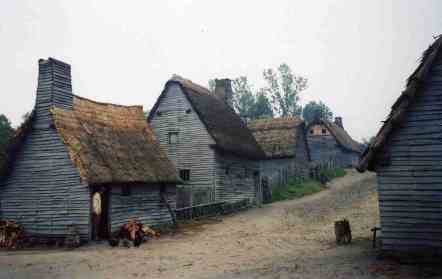
Outpost Plymouth
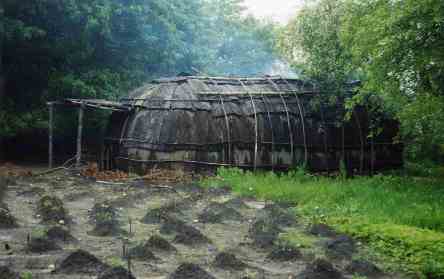
| Route 66 | Cities | Beaches |
 |
Outpost Plymouth |
 |
| It's true the Jamestown Colony down in Virginia came first, but due to various problems they had to restart three times, and finally gave up and moved the whole community inland, renaming it Williamsburg. Therefore, even though Plymouth wasn't founded until 1620, it can claim to be the oldest continuously inhabited settlement in North America. And the amount of history preserved here is incredible. Whether through a sense of destiny or arrogance, the Puritans were absolutely convinced they were founding an empire, and their descendants were going to want to know exactly what happened. So they made sure they kept it for us. All of it. Their documents, maps, deeds, birth and marriage and death records, accounting ledgers, clothing and silverware and furniture, farm implements, houses, essays, letters, poetry, sermons and meeting minutes are all here for us to see. The structures that are perishable are meticulously maintained and repaired. Critical documents are kept under glass away from fingerprints. Even rugged objects like the famous Plymouth Rock are protected, as shown at right. The Mayflower is stored in roofed drydock between Labor Day and Memorial Day. | 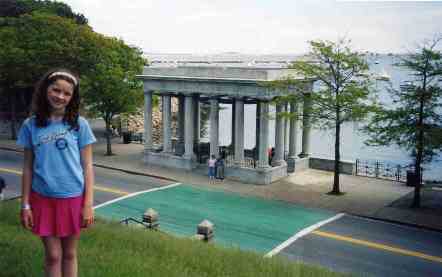 |
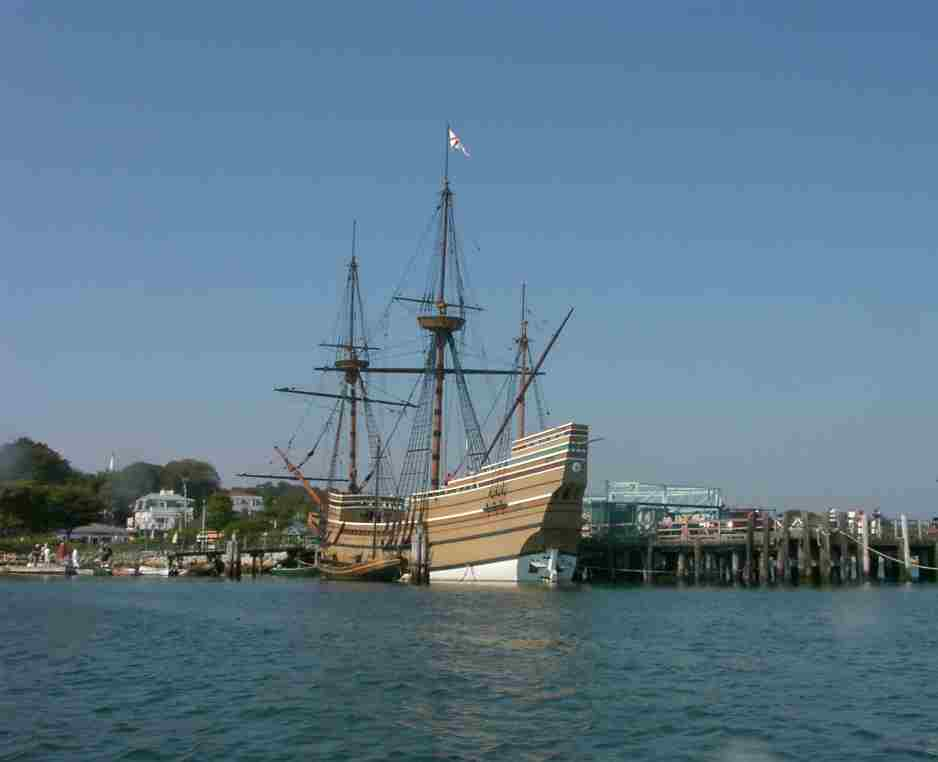 |
The Mayflower, seen here from out on the harbor, is a magnificent historical artifact. It does need continual repainting, recaulking, rerigging and other maintenance. But Americans continue to lavish tender loving care on the ship. It is surely one of the most photographed vessels in the world. Hundreds of thousands of people every summer come on board, poking around the lower decks, gripping the tiller, peering up at the crow's nest, taking whole rolls of film, trying to imagine what it was like to actually cross the ocean on this surprisingly small boat, or even what it would be like to be one of the crew every Summer when it goes out on its shorter cruises down to Mystic or out to Provincetown. |
You could spend a week in Plymouth, but you absolutely have to spend two days and two nights. A visit must include a day to meander around the town, visit the Mayflower and Plymouth Rock, climb Coles Hill, see Brewster Gardens, and walk up Towne Brook for an early lunch at The Old Jenney Grist Mill. You need an afternoon for the 1640 houses, First Church, Burial Hill, Pilgrim Hall Museum, the Forefathers Statue, and a return to your vehicle for a drive out to Flax Pond Cranberry Bog and Morton Park, where Massasoit and his warriors would camp whenever he visited the Pilgrims. A picnic dinner, cookout or swim at the beach there should be considered. The second day should be devoted to Plimoth Plantation, lunch at the Patuxet Cafe, afternoon at Wampanoa, the Crafts Hall, the Livestock Center and a swim at Plymouth Beach. If you can spare extra days, you can take the ferry to Provincetown, a whalewatching cruise, a fishing charter, The Floating Classroom for oceanographical studies, or multiday or overnight Plantation programs |
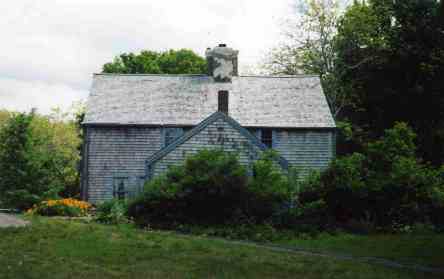 |
|
|||
|